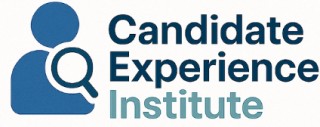
Understanding the Role of Prehire Assessments
Importance of Initial Evaluation Methods
The role of prehire assessments in the hiring process cannot be overstated. These evaluations serve as the first step in determining if a candidate’s skills, problem-solving abilities, and communication skills align with job requirements. By focusing on these areas, organizations can enhance the chance of a successful candidate experience while streamlining recruitment.
In various sectors like contact centers and customer service, pre-employment assessments help to ensure that candidates are well-suited to handle high volume situations and customer interactions effectively. Initial screenings, such as job simulation and decision-making tests, provide insight into how a potential hire might perform under real-world conditions.
Effective prehire assessments are vital tools that aid in selecting top candidates, thereby enhancing company service and customer satisfaction. As companies refine these assessments, it’s crucial to maintain a balance between thorough evaluations and candidate comfort, ensuring the process is both rigorous and candidate-friendly from the outset.
Designing Candidate-Friendly Assessments
Crafting Candidate-Centric Assessments
Designing assessments that resonate with candidates requires a keen focus on clarity, simplicity, and relevance, all while maintaining a fair evaluation of skills. Achieving a comprehensive career assessment can be the difference between a positive or negative candidate experience. Here’s how to ensure your assessments are candidate-centric:- Clarity in Communication: Communicate the purpose of each test clearly and what skills or abilities it measures. This transparency fosters trust and reduces candidate anxiety.
- Relevance to the Job: Ensure every assessment directly relates to the job in question. This means tailoring tests to measure the exact skills and competencies required for the role, such as communication skills in customer service roles or problem-solving abilities in decision making positions.
- Simplicity and Accessibility: Avoid complex and lengthy processes. Create assessments that are straightforward and easy to complete, offering support like FAQs or direct contact to address candidate queries, especially in high volume recruitment scenarios.
- Job Simulation and Real-World Scenarios: Implement job simulation exercises that mimic real-world tasks candidates will encounter in the role. This provides a realistic preview and evaluates their readiness and aptitude effectively.
- Encouraging Honest Reflections: Encourage candidates to self-assess and reflect on their own performance post-assessment. It’s not only about gauging their capabilities but also giving them insight into their own strengths and areas for improvement.
Balancing Assessment Rigor and Candidate Comfort
Striking the Right Balance: Assessments and Empathy
Crafting an optimal candidate experience requires a delicate balance between rigorous assessment and fostering candidate comfort. This balance is especially crucial in high-volume hiring for roles like those in call centers or customer service positions. While it’s essential to evaluate a candidate's skills, problem-solving abilities, and decision-making capabilities, it’s equally important to ensure that the assessments themselves do not intimidate or frustrate potential hires. To achieve this balance, it's vital for recruitment teams to design assessments that are not only effective in gauging candidate ability but also respectful of their time and effort. Here are some strategies to strike this balance:- Clear Communication: Offer transparent communication about the assessment process including what to expect and how it links to the potential job role. This kind of openness helps put candidates at ease.
- Realistic Job Simulations: Incorporate realistic job simulation assessments to provide candidates with a genuine feel for their potential roles. This helps in assessing their suitability while simultaneously giving them a snapshot of their likely day-to-day tasks.
- Consideration for Candidate Well-being: Thoughtful assessments are designed with empathy in mind. Avoid overly long or complex tests that might overwhelm candidates. It's important to show that you value their application by respecting their time.
- Use of Technology: Leverage technology to streamline the assessments, providing a user-friendly interface that enhances candidate engagement. Such systems can also aid in minimizing bias and standardizing the hiring process.
- Frequent Feedback: Incorporate feedback mechanisms that communicate the status and results of their assessments. Keeping the lines of communication open contributes positively to the candidate experience.
Technology's Impact on Prehire Assessments
Leveraging Technology for Improved Prehire Assessments
In today's fast-paced recruitment landscape, technology plays a pivotal role in shaping the candidate experience, particularly during prehire assessments. As companies strive to refine their hiring process, leveraging technological advancements can significantly enhance both the efficiency and effectiveness of assessments. The integration of job simulation platforms allows candidates to better understand what the role entails through realistic scenarios. Such simulation assessments not only evaluate a candidate's skills and abilities in real-time but also provide an immersive experience that feels almost like the job itself. By accurately reflecting tasks one might encounter in a contact center or customer service role, job simulations can be a great measure of problem-solving and decision-making capabilities. Moreover, the use of AI-driven tools in pre employment tests can streamline the process. These tools help recruiters focus on core competencies like communication skills, cutting through massive volumes of applications in high volume hiring scenarios. The automation of certain tasks, such as initial screening and sorting of candidates based on their performance in assessments, significantly reduces the time and effort involved in the recruitment process. Also, platforms that offer online assessments provide a flexible and accessible way for candidates to complete tests at their convenience. This flexibility is particularly beneficial for remote job seekers, ensuring a fair chance for every candidate regardless of their location. Additionally, tools that provide instant feedback after assessments can help maintain candidate engagement, allowing them to understand areas of strength and those needing improvement. Finally, a focus on data analytics allows organizations to measure the effectiveness of their hire assessments. By analyzing data collected during the prehire stage, companies can better understand which assessments are most predictive of future job performance, paving the way for refined techniques in future recruitment cycles. To fully leverage technology in prehire assessments, investment in the right tools and platforms can lead to improved hiring outcomes and a more candidate-friendly experience, ensuring that both the organization and candidates are well-aligned throughout the hiring journey.Feedback and Communication During Assessments
Effective Communication During Assessments
In the hiring process, communication is key, especially during prehire assessments. Candidates often feel anxious about the unknowns of employment assessments, and clear communication can alleviate some of this stress. It's crucial to keep candidates informed about what to expect during the assessment phase. This includes providing details about the types of tests they will encounter, such as job simulation or problem-solving exercises, and the skills being evaluated, like decision-making and communication skills.
Providing Constructive Feedback
Feedback is a vital component of the candidate experience. After assessments, offering constructive feedback can enhance the candidate's perception of your organization. Whether they are successful or not, candidates appreciate knowing how they performed. This feedback should be specific, focusing on areas like their ability to handle job simulation tasks or their performance in high-volume scenarios typical of contact centers. Such insights not only help candidates improve but also reflect positively on your recruitment process.
Maintaining Open Lines of Communication
Throughout the assessment process, maintaining open lines of communication is essential. Candidates should feel they can reach out with questions or concerns. This can be facilitated through various channels, such as email, phone calls, or even a dedicated contact center. Ensuring that candidates have access to a customer service representative who can address their queries promptly can significantly enhance their experience.
Transparent Reporting and Updates
Transparency in reporting and updates is another critical aspect. Candidates should be kept informed about their progress and any next steps in the hiring process. This can be achieved through regular updates, whether via email or a candidate portal. Providing a clear timeline and setting expectations can help candidates feel more at ease and engaged throughout the process.
By focusing on effective communication and feedback during prehire assessments, organizations can significantly improve the candidate experience. This not only aids in attracting top talent but also strengthens the overall recruitment strategy.
Measuring the Success of Prehire Assessments
Assessing the Return on Investment of Hire Assessments
Evaluating the effectiveness of prehire assessments is essential to optimize the recruitment strategy and candidate experience. Ensuring that these employment assessments serve their intended purpose requires a robust framework for measurement and evaluation. Here’s how organizations can measure the success of hire assessments:- Quantifiable Metrics: By capturing data such as the number of job offers accepted, retention rates, and employee performance post-hire, companies can correlate these outcomes with pre-employment test results. High-performing employees often reflect the success of the assessment process in identifying the right talent.
- Candidate Feedback: Engaging candidates in sharing their perspectives through post-assessment surveys can reveal insights into the perceived fairness and clarity of the process. This feedback loop is crucial for continuous improvement and aligns with the focus on candidate-friendly assessments.
- Cost-Benefit Analysis: Consider the time and resources invested in hiring assessments. Compare this against the costs of turnover or a bad hire. The ability to consistently hire candidates with the right skills can translate into a more cost-effective recruitment process.
- Quality of Hire: Evaluating the candidate's performance in their role by assessing decision-making capabilities and problem-solving skills can indicate the precision of the assessments. Are hired candidates achieving key performance indicators and contributing to the organization's goals?
- Customer Experience Impact: For roles in the contact center or similar environments, assess how well new hires are satisfying customer service expectations. Metrics such as customer satisfaction scores and call resolution rates can indicate the effectiveness of simulation assessments in preparing candidates for real-world scenarios.
- Longitudinal Studies: Over time, conducting studies on a cohort of hires can unveil trends that inform the refinement of the prehire assessments. These studies consider changes in business objectives and workforce dynamics, providing a richer context for evaluating effectiveness.













